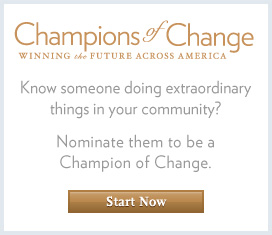Champions of Change Blog
Bringing Water to Homes
Posted by on April 17, 2013 at 2:43 PM EDT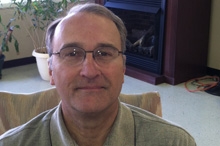 Bob Dietrick is being honored as a Champion of Change for his efforts in being a Rotarian.
Bob Dietrick is being honored as a Champion of Change for his efforts in being a Rotarian.
I am honored to be chosen as a Champion of Change for my work with Operation Starfish in Middle Tennessee. Our work revolves around a critical need that is often forgotten in American: the need for clean, accessible water in homes. The 2000 Census revealed that more than 1.7 million people in the United States still lack the basic plumbing facilities that many in America take for granted. Tennessee itself has approximately 21,213 households lacking complete plumbing facilities.
Several studies have documented the critical importance of water and sanitation systems, including the high risks for diseases such as hepatitis A, salmonellosis, shigellosis, and tuberculosis. However, we all know the basic truth that clean, running water allows us to cook for our families, wash our hands, and clean our homes. These basic necessities can very simply change a life.
To address these issues, the Franklin Rotary at Breakfast, in Franklin, TN, initiated Operation Starfish in 2004. Our goal is to bring water to the homes of people in Middle Tennessee who cannot achieve this goal on their own. Over the past few years, we have engaged in many different water projects within our community, which have includedcleaning and repairing wells, purchasing water and sewer taps, running water and sewer lines to homes, and repairing water leaks and septic systems.
Since the inception of this initiative, we have completed water projects for more than 30 households, and the Franklin Rotary Club is now spending 25% of its income to continue this investment in the community.
Identifying those in need is one of our ongoing challenges. To further our outreach into the community, we partner with various local organizations. We communicate with churches in our community, water companies, government agencies which oversee the sewer and septic issues, and other nonprofits which provide assistance to those in need. These organizations help us reach the population which can benefit from our services.
Our customers are usually older people who own their homes but whose sole income is social security. They often lack the resources to overcome the obstacles associated with gaining access to clean water. Additionally, we care for emergency situations, such as the time we ran water lines inside of the house for a person who lost everything in a fire.
All over the world, people lack access to clean water. Yet, so rarely do we look in our own backyard for those in need. It only takes a weekend for Operation Starfish to change the life of a family. Many of us cannot imagine living without running water in our homes. However, this is a reality for far too many people in America.
Our Rotary Club is working to eliminate this needless risk of disease and hardship, one household at a time. My hope is that this award will bring further attention to our work, and help us reach deeper into the community.
Bob Dietrick has been active in Operation Starfish for 9 years, and has traveled to Guatemala to continue his work in bringing clean, healthy water to people in need.
Learn more aboutHello, Sandy!
Posted by on April 17, 2013 at 2:27 PM EDT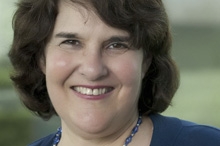 Bonnie Sirower is being honored as a Champion of Change for her efforts in being a Rotarian.
Bonnie Sirower is being honored as a Champion of Change for her efforts in being a Rotarian.
Like the lead character in Hello, Dolly!, I’ve always been a woman who arranges things. So when Hurricane Sandy hit the New York and New Jersey area at the end of October, I knew that I had to do something to organize all of us to provide relief for all those who had lost their homes and their belongings and to start the rebuilding efforts. Our Rotary Districts in New Jersey and New York have a long history of working together on projects such as a Vocational Assembly that honors those who use their occupations to help Rotary and group public relations projects, so we already had the mechanism in place to work together.
The hurricane ruined more than 300,000 homes and businesses within a 300 mile radius from our location in northern New Jersey. More than three million people were, like me, without power, Internet, computers, phone or cable for weeks. The day after, trees were down everywhere and roads were blocked. In my own Rotary District, two towns were completely flooded when the Hackensack river overflowed a berm that had protected Moonachie and Little Ferry for years. Hoboken was underwater, as was Jersey City. Many of the Rotarians in our district had to be rescued from chest-deep water or had their homes and businesses destroyed.
But even before the storm, I started to receive messages from around the world expressing their concern for us from as far away as my friend, the District Governor in Vladivostok, Russia, saying that they were praying for us. We used our website, www.nynjrotary.org, as disaster central to let everyone know what was happening. Over the next four weeks, we had nearly 4,000 hits.
On Thursday after the storm, when we could finally drive a little, I visited the neighboring town and my phone blinked on with over 250 messages and 600 emails from people all over the country and the world asking what they could do to help. We quickly learned that we had to communicate, collect, and then collaborate together on rebuilding. I started reaching out by phone and e-mail and Facebook to my fellow Rotary Governors, those who had contacted us, and the Rotary Clubs in our area hardest hit by the Hurricane. We have a great Rotary District here in northern New Jersey, and four Rotarians had already donated their warehouses. On Saturday, I addressed the 1,500 participants at Rotary Day at the United Nations to let them know how they could help.
By Monday night the next week, the first truck rolled in – from Maryland – laden with food supplies, diapers, bottled water, blankets, cots, and linens. In the next six weeks, more than 130 trucks from as far away as Orlando, Vancouver, Maine, and San Diego dropped off supplies at our warehouses. More than 225 volunteers from Rotary and the Volunteer Center of Bergen County worked every day and weekend for six weeks to sort what had been donated and to deliver the goods all the way down to the southernmost parts of the New Jersey shore and the eastern part of Long Island.
We worked in concert with Volunteer Organizations Active in Disasters run by the Volunteer Center of Bergen County to plan all of the relief. Peter Wells, an architect from the Park Ridge Rotary Club, and our District’s Disaster Chair, did a yeoman’s job of coordinating all of the deliveries to the warehouses, sorting everything, and directing deliveries. Peter’s efforts kept our warehouses open for six weeks with weekend deliveries each week to more than 400 destinations until the Rotary Districts down the Jersey Shore and out in Far Rockaway, Queens, could open their own warehouses and accept donations. We received more than $18 million in donated goods, including 84,000 pounds of used clothing that we couldn’t even distribute.
People from all over the world were very generous, too. We received more than $600,000 in cash donations plus tens of thousands of dollars in gift cards that were distributed throughout the six Rotary districts most affected. We received donations from Canada, Turkey, Australia, Israel, and from virtually every state. CBS Radio donated $5,000 worth of ads broadcasting “Help Rotary Help Hurricane Sandy victims” and urging folks to visit our website. These donations were split among the six most affected districts, but monies donated within each district stayed there.
Our work is not done. The rebuilding effort will take two to three years. We are still working together with organizations like VOAD, Habitat for Humanity, and Rebuilding Together. So far, in our District, we have helped repair and refurbish two firehouses, donated equipment to the ambulance corps in two cities, and helped pay for renovations to the recreational fields in Secaucus. We will be painting another firehouse next week and just paid for the development of a volunteer reception center and a hostel in Moonachie where volunteers from all over the country can stay. Other districts are helping individuals rebuild home, working on homes of families with disabled children, and building day care centers and gardens. Many people are still homeless, even five months later, and still have no power or heat. Residents in southern NJ and Long Island/Brooklyn/Queens still need supplies.
Thank you again for this great honor and the opportunity to share. Hurricane Sandy brought together all of the Rotarians in our District, in the other Districts nearby and throughout the world to share in easing the pain of those who had lost their homes and businesses.
Learn more aboutPaying Forward
Posted by on April 17, 2013 at 2:07 PM EDT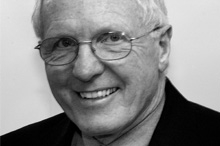 Jeremiah J. Lowney, Jr is being honored as a Champion of Change for his efforts in being a Rotarian.
Jeremiah J. Lowney, Jr is being honored as a Champion of Change for his efforts in being a Rotarian.
I am so pleased to be honored with the White House Champion of Change title – thank you!
I was born in Fall River, Mass, the oldest of eleven children. Our family was very poor, and we all struggled to get through school and college – and, for me, Dental school. My mother and father always taught us that our only way out of poverty was through education.
In 1981, at age 45, I had a wonderful, healthy family and a successful orthodontic practice. I was recovering from a serious malignancy and decided with my wife that we had reached the “giving back” or “paying forward” plateau in our lives.
I accepted an opportunity to join a group venturing to Port au Prince, Haiti in February 1982. I carried dental instruments, anesthesia, and miscellaneous items, and, along with my son, Mark, a Boston College student, we set up dental extraction clinics in the slum clinics and hospices operated by Mother Teresa’s Religious Sisters. The need was overwhelming. I would remove hundreds of diseased and infected teeth each day. Usually, it was the first time that these poor folks had experienced extractions with anesthesia.
I was so thoroughly captivated by the need, the dedication of the Sisters, and the appreciation of these poor and broken neighbors that I returned to Haiti in three months, and have journeyed to Haiti every three months for 31 years.
In 1985, at the request of Mother Teresa, I moved my small, volunteer operation to Jeremie, an extremely remote area in southwestern Haiti. Other than a small, poorly equipped government hospital, there was virtually no health care for a population of 600,000 people.
We formed the Haitian Health Foundation (HHF) and began to build a health system. Our current operating budget is $3.5 million. 230,000 of this hemisphere’s poorest people are under the HHF umbrella of care, and HHF’s facilities in Haiti employ over 180 people, mostly local Haitians.
Since 1985, HHF has created a number of outreaches in this area, including:
Medical
- Built a 27,000 square foot, three-story concrete outpatient clinic, with medical facilities, office, and a volunteer residence. Several hundred patients a week are treated there. Services include: full clinical laboratory, pharmacy, X-Ray, sonography, inhalation therapy, breast exam programs, and a diabetes program providing for several hundred diabetic patients.
- Secured a USAID Maternal and Child Health Grant, which has grown to help fund HHF’s Public Health Program to over 100 extremely rural, mountain villages.
- Built a residential treatment facility (The Center of Hope) for village women in high risk pregnancy (50 beds), and for severely malnourished children (25 beds). In addition to the residential services, hundreds of prenatal women receive prenatal care at the Center each day.
- Fully immunized over 100,000 children, decreased deaths from pneumonia in children by 50%, and, among others, have impacted maternal mortality, early pregnancy and diarrhea deaths in children with our programs.
Education/Relief
- In 2000, built (and fully funded) a school adjacent to a slum area where 1,200 children grades K–9 receive an education at no cost, and each receives a daily hot meal (usually their only meal of the day).
- Supported up to 800 poor families through a family sponsorship program since 1988, and provided school support for up to 1,500 children for over 16 years.
- Built five Akamil food processing plants in Jeremie and villages to make high protein foods out of local produce.
- Established a feeding program for the most malnourished children and perinatal women, serving several thousand with high protein food, including ‘take home.
- All programs involve a level of education before services provided. Health lessons are always taught through songs, stories, and skits, due to the high level of non-literacy.
- Since 2005, nearly 4,000 youth – mostly teenage girls – have benefited from HHF’s Responsible Sexuality/Soccer program. This program teaches anatomy, physiology, sexual negotiation skills, etc., and has already had an impact on teen pregnancy in our catchment area.
Development
- Restored about 8,000 Creole sows lost in the 1970 Swine Flu. This began as a Rotary project and grew.
- Built nearly 3,000 new cement/tin roof houses in the villages (Happy House) at $1,000 each and nearly 3,000 latrines. This started as Rotary project.
- Distributed over 5,000 female goats to poor Haitian farmers. This also began as a Rotary project.
- Established and supported a Rotary Club in Jeremie.
- Rebuilt a terrible slum, Makandal, with 115 new cement/tin roof houses at $5,200 each, making a healthy social and hopeful future for several thousand.
- Established a garden/tree nursery project to replace trees and gardens lost in villages due to storms.
-
Provided for 130,000 “internally displaced refugees” who ventured to Jeremie after the January 2010 earthquake searching for shelter, medical care, and food.
These are but a few of HHF’s programs. Each month at least one or two teams of volunteers journey to HHF at their own expense, serving the poor and sharing time, talent, and treasure.
I was given one year to live in 1981, and it has been a wonderful, productive and fulfilling “year”!
Jeremiah J. Lowney, Jr. is the Founding President of The Haitian Health Foundation.
Learn more aboutS4k
Posted by on April 17, 2013 at 1:47 PM EDT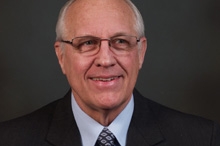 Tom Barnes is being honored as a Champion of Change for his efforts in being a Rotarian.
Tom Barnes is being honored as a Champion of Change for his efforts in being a Rotarian.
I was born and raised on a quintessential Iowa farm. Hard work and long hours ruled my youth. It was this environment that taught me that anything I wanted to accomplish could be done with enough elbow grease and fortitude. All the farmers belonged to one large family of neighbors that helped each other out when the need would arise. There wasn’t competition between the farms, just a general sense of what needed to get done to support our families and the people of the world with crops and livestock products. After this amazing upbringing, I found a love of manufacturing and was able to build a business that has allowed me to continue to give back to my community.
I found Rotary after my family was raised and I had the need to belong to a family-like group. Rotary is definitely that group. Everyone bands together to accomplish goals and help our community thrive.
In 2003, I took over a neglected project, Shoes for Kids (S4K). The Shoes for Kids project provides Payless Shoes gift cards to students identified and having a need by the school health administration. The benefit of new shoes over hand me downs is pride. Many of these students have simply never had the opportunity to go shopping and actually pick out what they want in a store. It is our hope that they will get two gifts out of our donation, new proper fitting shoes and a boost in their self-esteem. We also hope that they remember the feeling and pay it forward when life affords them that opportunity.
The glory of this project is that it can be replicated in any community. We started out by soliciting friends and local business leaders for donations, and by participating in local events, such as fairs and parades. Our giving base has expanded each year. To date we have donated over $70,700 in new shoes! You can make this happen in your town too. There is no better feeling than when a student writes a thank you letter in crayon letting you know how they love their first pair of new shoes, or when a school health administrator tells you about the student that came to school with holes in the bottoms of their shoes and the toes cut out so their feet were not smashed, and was able to go home with brand new sneakers.
Tom Barnes took over and made Shoes for Kids a success.
Learn more aboutPower of One: Shots For Tots
Posted by on April 17, 2013 at 1:27 PM EDT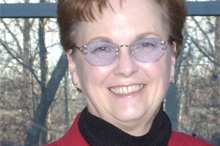 Harriett Schloer is being honored as a Champion of Change for her efforts in being a Rotarian.
Harriett Schloer is being honored as a Champion of Change for her efforts in being a Rotarian.
I clearly remember the day in October 1995 that I became a Rotarian. I had looked forward to becoming a member for quite some time. People join Rotary for many reasons, such as fellowship, friendship, networking, and service. For me it was all about service. My husband has been a Rotarian since 1977 and our entire family has worked with himon many Rotary service projects. I enjoyed my work as a Rotary spouse but wanted to be a Rotarian in my own right.
I was very proud to finally wear my Rotary pin.
In 1998, Walt and I attended our first Rotary International Convention. While there, we learned of The Rotary Foundation’s creation of the Children’s Opportunities Grants. The purpose of the grants was to save children’s lives and improve the lives of needy children. Hearing about these new grants was a “light bulb” moment for me. We live in Deschutes County, Oregon, which in 1998 had one of the lowest childhood immunization rates in the US, with less than forty-two percent of our children being fully immunized. Newborns, children in preschool, and school-age children were not getting the required immunizations and there was a complete lack of “herd immunity” in the schools, opening the opportunity for a potential epidemic.
I learned this when I was asked to serve as the Rotary representative on the Deschutes County Immunization Coalition (DCIC) and attended my first meeting. The coalition was seeking a way to reverse those statistics but there was no money to put together a program. The DCIC was asked to come up with a program and get it funded. When I heard about the Children’s Opportunities Grants, I knew I had found the funding; we just needed to create a program. The application for the “Rotary Shots for Tots” free immunization program was submitted to The Rotary Foundation in October 1998, and, in December 1998, the Rotary Club of Bend received a $25,000 Children’s Opportunities Grant to launch the program.
Shots for Tots and childhood immunizations are one of my passions, as is Rotary’s mission for the global eradication of polio. In 2009, I wrote an OpEd for the Bend Bulletin that focused on the growing trend of parents not immunizing their children. I wrote about the fear that gripped entire nations when there were no vaccines and an outbreak of polio or measles or another disease occurred. For me, there is no logical reason to not immunize children. It makes no sense. It is a potential waste of the life of a child. I know that the choice many young parents are making today to not vaccinate their children could eventually lead to needless, preventable illness, and even death. They have grown up in a time where they have never been witness to an epidemic that causes death or crippling. They believe that immunizations are no longer necessary because epidemics do not exist (at least not in the United States). They do not understand that potential infection is merely a plane ride away and the only sure protection is immunization. The Shots for Tots program is about saving children’s lives at no cost to their families, while at the same time making families fully aware of the importance of childhood immunizations.
Rotary could not do the Shots for Tots program alone. It had to be a community partnership between the seven Rotary clubs of Deschutes County, and all of the members of the DCIC (our DCIC members are from the public, private, service, medical, and educational sectors in our county). All seven clubs were on board, and the DCIC unanimously approved the program. More than 500 Rotary, medical, and community volunteers were recruited and trained. The media promoted the program and kept the free clinics at the forefront. PSAs on radio and TV told the importance of childhood immunizations. Immunization information was everywhere! During the first two years of the program our clinics were overwhelmed. Our message was being heard. Children were getting vaccinated. Shots for Tots was a huge success!
Since May of 1999, we have had 168 free clinics in four communities and more than 16,000 children have been immunized. Now in its 15th year, the program has become a Rotary model for community partnerships and has been replicated in three other Oregon counties and numerous Rotary Districts in the United States. Since 2002, Deschutes County has consistently ranked 2nd or 3rd in Oregon. The total value of the in-kind services donated by our partners is more than $6.3 million, not including the value of the thousands of volunteer hours.
Rotary has a belief in the “Power of One.” Everything we do in Rotary starts with an idea from a single individual. By working together, that idea becomes a reality and, if it’s significant enough, it will grow. Shots for Tots symbolizes the “Power of One” and, as a Rotarian, I was able to use that power and partner with others to help improve the lives of thousands of children. With Rotary’s help, we changed the way our county looks at health care not just for children but for everyone. I am very proud to be a Rotarian and I am honored and humbled to be recognized as a White House Champion of Change.
Harriett Schloer is the founder and Executive Director of Central Oregon Rotary Shots for Tots. She serves as the Rotary District 5110 Domestic Immunization Chair and the District 5110 PolioPlus Chair. She created the Pennies for Polio program in District 5110 in 2010 and in 2012 launched the PolioPlus Society. Since 2009, she has helped raise $485,000 for polio eradication in the district.
Learn more aboutSmokeTeam
Posted by on April 17, 2013 at 1:07 PM EDT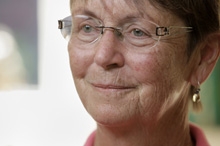 Nancy Sanford Hughes is being honored as a Champion of Change for her efforts in being a Rotarian.
Nancy Sanford Hughes is being honored as a Champion of Change for her efforts in being a Rotarian.
I am thrilled and honored to be selected as a 2013 White House Champion of Change for my efforts in establishing StoveTeam International, an organization addressing the leading cause of death for children under age five.
Smoke from indoor cooking fires kills eight times as many individuals as malaria, and StoveTeam International is working to provide alternative cooking solutions to protect those most vulnerable: the women who cook over open fires.
In May 2001, my husband died after an eight-year battle with breast cancer. The following year my life took a new direction when I volunteered with a medical team in Guatemala. I volunteered for three years, and one day a young woman named Irma came into the kitchen where I was working and asked if she could speak to us. She had fallen into an open fire at the age of two. Her hands had been burned shut. For sixteen years she had prayed for a miracle, and our medical team restored the use of her hands. We were her miracle.
We needed to prevent these burns, but burns were only part of the problem. The babies strapped to their mother’s backs were breathing in the equivalent of three packs of cigarettes per day, and I learned that the leading cause of death for children under five was a lower respiratory infection caused by open cooking fires. Guatemala alone needed six million stoves, and I knew I had to do something.
The only solution was to make and sell safe fuel-efficient stoves that would save lives. Within a year, and with the help of the Eugene Southtowne and San Salvador Rotary clubs, I raised money and wrote a grant for stoves. Within the next few years we developed the new safe, portable, affordable fuel-efficient Ecocina stove that produces very little smoke. It saves both forests and lives by reducing wood consumption by 50% and carbon emissions by 70%. Once we tested the stoves, we helped a local entrepreneur start a factory to produce them. In the next few years, with his help, we set up more factories. There are now six sustainable factories in five countries with three more factories in development.
StoveTeam International continues to work with these local entrepreneurs who have created their own businesses and produced and sold over 30,000 stoves. Through our mission we have already improved the lives of over 240,000 individuals in Mexico and Central America—but we’ve only just begun. Learn more about StoveTeam International and how you can help here.
Nancy Sanford Hughes helped found Stove Team International.
Learn more about
- &lsaquo previous
- …
- 74
- 75
- 76
- 77
- 78
- 79
- 80
- 81
- 82
- …
- next &rsaquo

